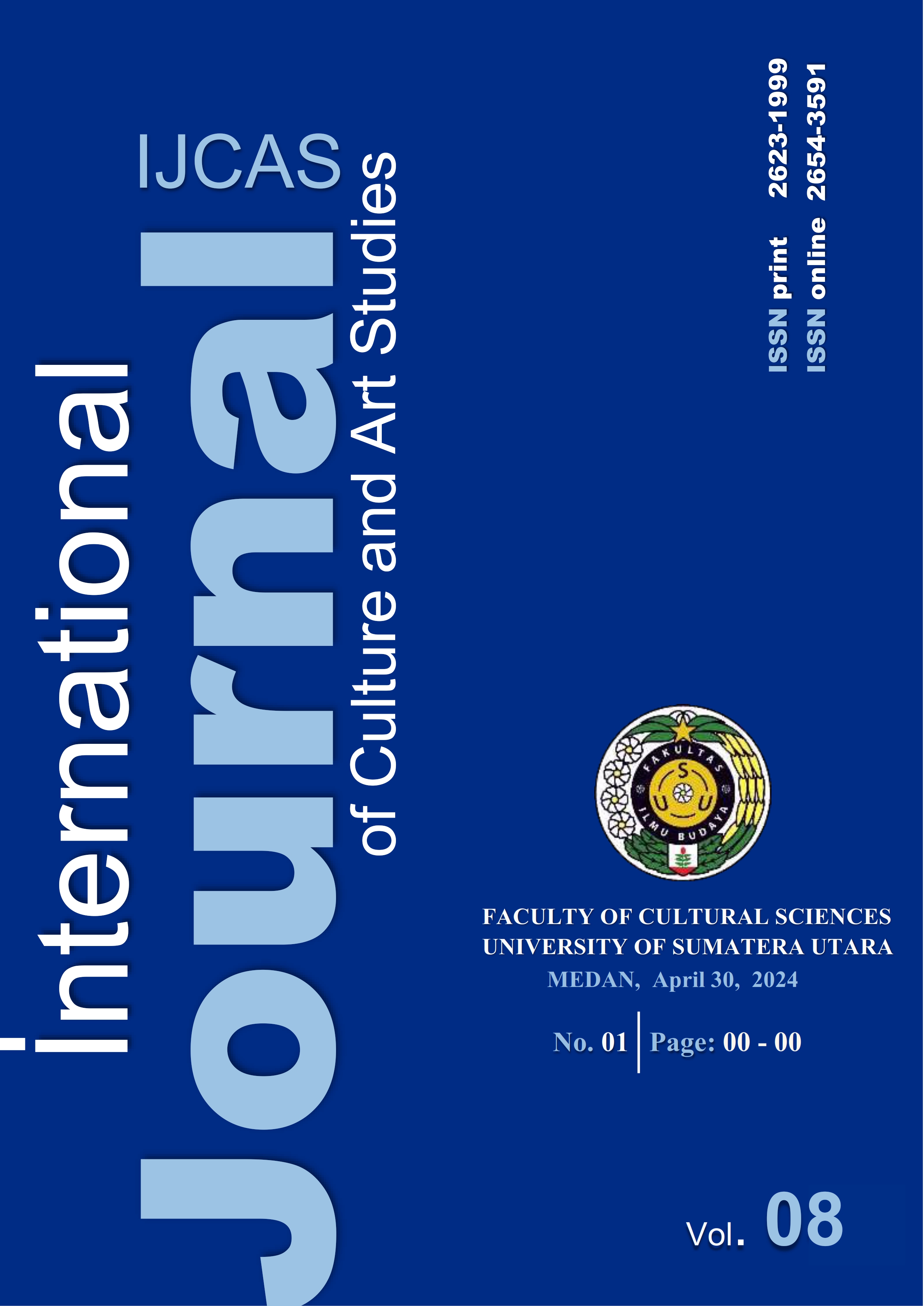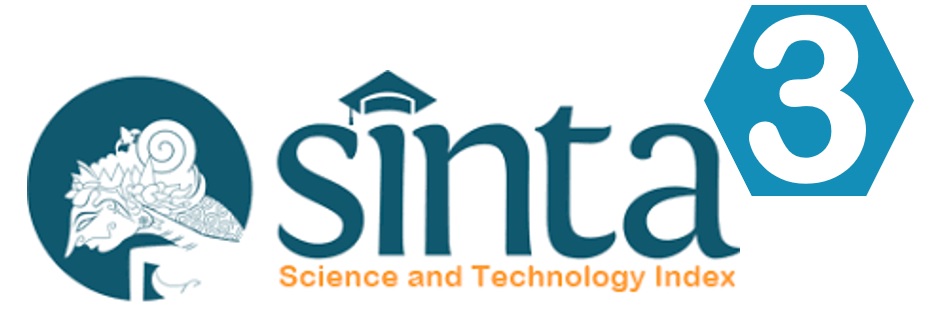Horizon of Expectation of Mandarin Students Towards the Novel Huo Zhe (æ´»ç€): Literary Reception Approach
DOI:
https://doi.org/10.32734/ijcas.v8i1.15889Keywords:
literary reception, horizon of expectation, chinese literature, Huo Zhe, Yu HuaAbstract
This study discusses the horizon of expectations of the students in the novel Huózhe (æ´»ç€) by Yu Hua. This research aims to measure the horizon of expectations that readers have regarding the ideas conveyed by the novel Huo Zhe (æ´»ç€), so it is hoped that this can contribute to the development of literary reception theory. The theory used is the literary reception theory which focuses on exploring the form of a horizon of expectation, so that the presence of a literary work can be accepted in society. The methodology used is qualitative descriptive method as a basis for determining variables, problem formulation, data collection techniques, data classification and data analysis. The research informants were 35 students majoring in the Mandarin Language from 6th and 8th semesters who had taken the concentration in literature. Informants will be asked to read Yu Hua's novel Huózhe (æ´»ç€) and provide their responses through a questionnaire. The results of this study indicate that the novel Huózhe (æ´»ç€) fulfils the 3 criteria carried in the Jauss theory, namely the values depicted in the text, the knowledge and experience of the readers, and the conflict between fiction and reality. Thus, it can be concluded that the reading informants from the 6th and 8th-semester students majoring in Chinese accept the novel Huózhe (æ´»ç€) positively, The results of acceptance positively influence new views that are built into the reader's horizon of expectations in interpreting the meaning of the ideas conveyed by the novel.
Downloads
References
Booker, M. K. (1995). A Apractical Introduction to Literary Theory and Criticism. London: Pearson.
Dermawan, R. N. & Cahya, A. (2014). Tanggapan Pembaca Terhadap novel Ayat-Ayat Cinta Karya Habiburrahman El Shirazy: Tinjauan Resepsi Sastra. Journal of Caraka. 1(1). P14-22
Endaswara, S. (2013). Metodologi Penelitian Sastra. Yogyakarta: Media Pressindo.
Gong, Y., Pang, Q., & Li. W. (2023. Engaging Students in the Online Classroom: A Case Study on Teachers of Chinese as a Foreign Language. Journal of Technology and Chinese Language Teaching. 14(2). 25-43
Gong, Y., Gao, X., & Lyu, B. (2020). Teaching Chinese as a second or foreign language to non-Chinese learners in mainland China (2014-2018). Language Teaching, 53(1), 44-62.
Gong, Y., Lyu, B., & Gao, X. (2018). Research on teaching Chinese as a second or foreign language in and outside mainland China: A bibliometric analysis. The Asia-Pacific Education Researcher, 27(4), 277-289.
Harsana, N, I Made A & I Nyoman S. (2018). Penerapan Pendekatan Reader Respons Dalam Meningkatkan Kemampuan Membaca Novel Siswa SMP Mutiara Singaraja. Journal of Pendidikan Bahasa dan Sastra Indonesia Undiksha. 8 (1), p141- 150.
Hua, Y. (2004). Huózhe. Beijing: Zhongguo Chang Pian Zong Gong Si.
Jauss, H. R. (1974). Lirerary History As A Chalenge dalam Ralp Caken (Ed). London: New Direcftion in Literary History Rudledje & Kegan Paul.
Kadir, H, & Patrian P. (2017). Respon Emosional Pembaca Terhadap Novel Surga yang Dirindukan 2 Karya Asma Nadia. Ikabudi, 6 (1), p51-58.
Malayu, S.M., Muliadi, A.Y. (2019). The Devoicing Intensity of Vowels [I] and [Ɯ]in Japanese Language. International Journal of Culture and Art Studies (IJCAS). 2(1). 01-19
Kurniawan, H. (2012). Teori, Metode, dan Aplikasi Sosiologi. Yogyakarta: Graha Ilmu
Nur, A. (2021). Cultural Reproduction in the Charles Dickens' Novel Great Expectations (Pierre-Felix Bourdieu Theory), International Journal of Culture and Art Studies (IJCAS). 5(1). 10–20
Pradopo, R. D. (2013). Beberapa Teori Sastra, Metode Kritik, dan Penerapannya. Yogyakarta: Pustaka Pelajar.
Prastowo, A. (2011). Metode Penelitian Kualitatif dalam Perspektif Rancangan Penelitian. Yogjakarta: Ar-Ruzz Media.
Ratna, N. K. (2008). Teori, Metode, dan Teknik Penelitian Sastra (Dari Strukturalisme Hingga Postruktualisme Perspektif Wacana Naratif). Yogyakarta: Pustaka Pelajar
Sari, R. P. (2013). Respon Pembaca Remaja terhadap Cerpen Robohnya Surau Kami Karya A.A Navis dan Implikasinya terhadap Pembelajaran Sastra. Jakarta. UIN Syarif Hidayatullah.
Segers, R.T. (2000). Evaluasi Teks Sastra. Yogyakarta: Adicita Karya Nusa
Sehandi, Y. (2014). Mengenal 25 Teori Sastra. Yogyakarta: Ombak
Sudaryanto. (1993). Metode dan Aneka Teknik Analisis Bahasa (Pengantar Penelitian Wahana Kebudayaan Secara Linguistis). Yogyakarta: Duta Wacana University Press
Sungkowati, Y. (2011). Resepsi Pembaca Terhadap Tjerita Njai Dasima. Journal of Metasastra. 4(2), p.195-207.
Sugiyono. (2014). Metode Penelitian Kuantitatif Kualitatif dan R&D. Alfabet: Bandung
Tomaszewski, L. E., Zarestky, J., Gonzalez, E. (2020). Planning Qualitative Research: Design and Decision Making for New Researchers. International Journal of Qualitative Methods, 19, 1-7
Wardana, K. M., Roy, S. (2019). Ideology and Class Division in Veronica Roth’s Divergent. International Journal of Cultural and Art Studies (IJCAS). 2(1). 30-37).
Downloads
Published
How to Cite
Issue
Section
License
Copyright (c) 2024 Intan Erwani; Julina

This work is licensed under a Creative Commons Attribution-ShareAlike 4.0 International License.













